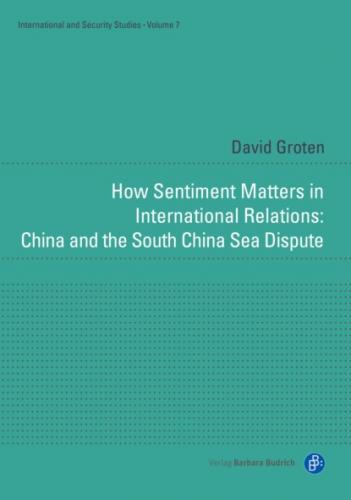“[M]aintain regional stability in the South China Sea under the principles of the Charter of the United Nations, the 1982 UN Convention on the Law of the Sea, the Treaty of Amity and Cooperation in Southeast Asia, the Five Principles of Peaceful Coexistence, and other universally recognized principles of international law” (ASEAN, 2002, November 4).
In addition, the DOC summarized the consensus to increase efforts with regard to confidence-building measures and to seek mutual trust. In so doing, the DOC, the very first document jointly issued by ASEAN and China, was generally perceived as a milestone on the way toward a binding code of conduct. In July 2011, the ‘Guidelines on the Implementation of the Declaration on the Conduct of Parties in the South China Sea’ was adopted, a document reaffirming the significance of the DOC and providing a list of measures feasible to implement DOC provisions and objectives into precise practice. The ‘ASEAN-China Joint Working Group on the Implementation of the DOC (JWG), established in 2004, was commissioned to “formulate recommendations” on a number of issues such as “marine scientific research” and “safety of navigation and communication at sea” (ASEAN, 2004). However, this document was again guided by the typical principles of ‘ASEAN-style cooperation’ being mutual understanding, consensus, consultation, and cooperation. Therefore, all recommendations made by the JWG are non-binding and rest on a mere voluntary basis. However, quite contrary to the initial purpose of the 2002 and 2011 documents, each and every SCS claimant state (and beyond) has increased its military (especially maritime) capacities and forces; likewise, tensions have exacerbated instead of being mitigated. Therefore, parties to the 2002 and 2011 documents are currently negotiating a binding code of conduct. However, a date of ratification, let alone implementation, is still not in sight and progress is only slowly proceeding, despite the fact that a Single Draft BCoC negotiating text was agreed upon in August 2018 as the basis of future negotiations. To put it briefly, the common objective by ASEAN in the SCS may be summarized as long-term peace and security. This is to be accomplished by positioning itself at the heart of Southeast Asian regionalism, thereby providing a multilateral framework, which promotes peaceful conflict resolution in line with international law and discourages parties from unilateral military and other measures undermining these objectives.
Following the introduction to this project’s single case study and its relevant context and stakeholders involved, chapter 4 entails the main QCA analysis and utilizes its key results for the analytical discussion of the three hypotheses.
Конец ознакомительного фрагмента.
Текст предоставлен ООО «ЛитРес».
Прочитайте эту книгу целиком, купив полную легальную версию на ЛитРес.
Безопасно оплатить книгу можно банковской картой Visa, MasterCard, Maestro, со счета мобильного телефона, с платежного терминала, в салоне МТС или Связной, через PayPal, WebMoney, Яндекс.Деньги, QIWI Кошелек, бонусными картами или другим удобным Вам способом.
